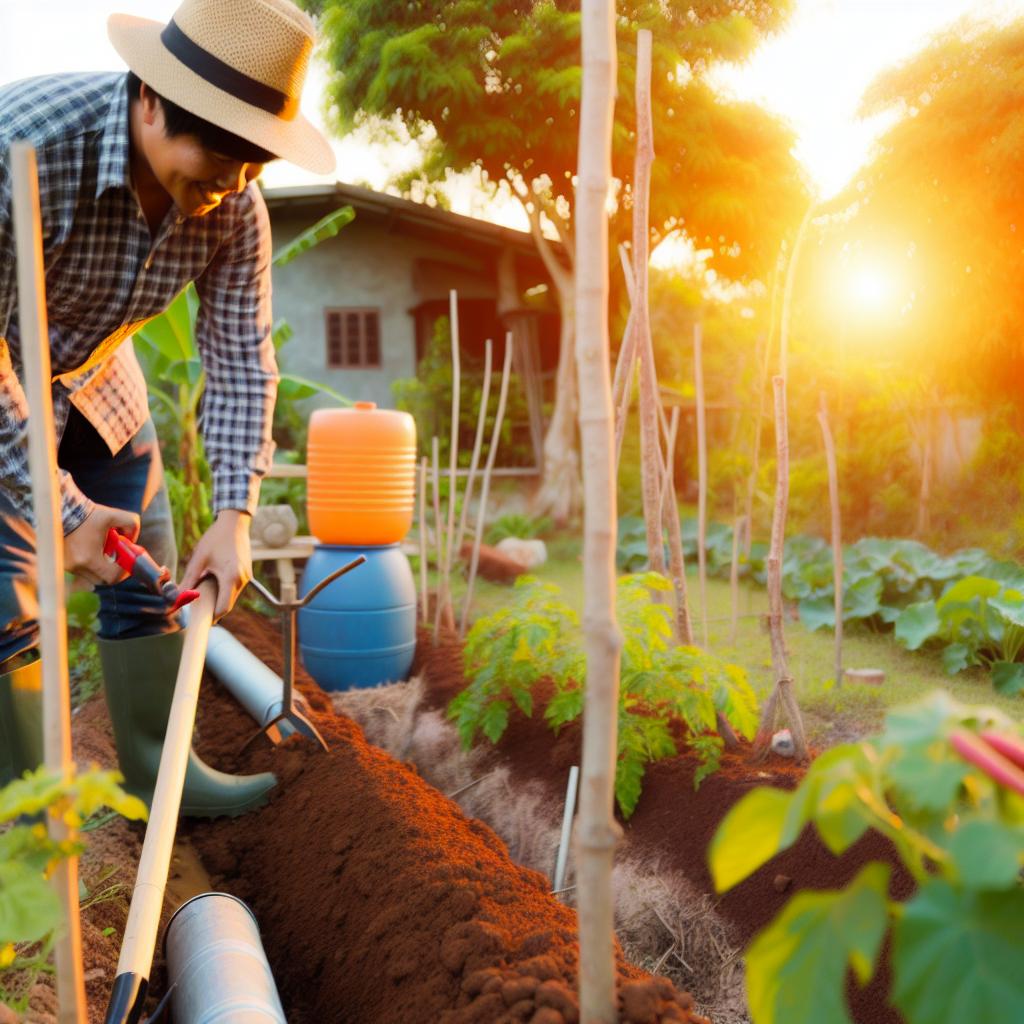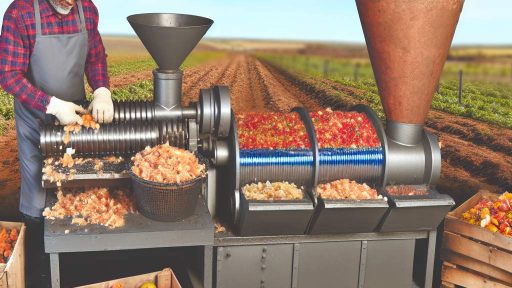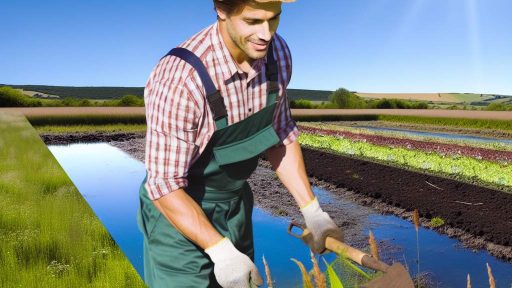Introduction to Permaculture and its Relevance to Water Conservation
Permaculture focuses on designing sustainable systems based on natural ecosystems.
This approach helps manage resources efficiently and promotes biodiversity.
Water conservation is a crucial element of permaculture practices.
Moreover, effective water management contributes to overall ecological health.
Understanding Permaculture Principles
Permaculture principles emphasize working with nature, not against it.
These principles encourage creating self-sustaining systems.
Permaculture also advocates for careful observation of natural environments.
For instance, gardeners use contour gardening to minimize water runoff.
The Importance of Water Conservation
Water is a limited resource, vital for all life forms.
Conserving water mitigates drought impacts and secures food production.
Effective water management practices enhance soil health and fertility.
Additionally, water conservation supports sustainable agricultural practices.
Permaculture Techniques for Water Management
Emission techniques such as swales capture and direct rainfall effectively.
These earthworks slow down water movement, allowing soil absorption.
Another method is using rain gardens to filter and manage runoff.
Transform Your Agribusiness
Unlock your farm's potential with expert advice tailored to your needs. Get actionable steps that drive real results.
Get StartedThese gardens enhance aquifer recharge and reduce erosion.
Community and Global Impacts
Adopting permaculture practices fosters community resilience.
Communities that practice permaculture often share resources and knowledge.
This collaboration builds stronger networks and promotes sustainability.
Furthermore, these efforts contribute to global ecological health.
Understanding Water Cycle in Permaculture
Defining the Water Cycle
The water cycle is essential to permaculture principles.
It includes processes like evaporation, condensation, and precipitation.
Additionally, understanding this cycle helps in water conservation.
Importance of Water in Permaculture
Water plays a vital role in ecosystem health.
It sustains plants, animals, and microorganisms.
This interconnectedness highlights the need for effective water management.
Key Principles of Water Management
First, observe and interact with natural patterns.
Next, design for water retention and distribution.
Also, use mulching to minimize evaporation.
Implement swales to capture runoff and enhance infiltration.
Lastly, integrate diverse planting to create healthy soil structures.
Techniques for Water Conservation
Rainwater harvesting is an effective method of conservation.
This technique captures and stores rainwater for future use.
Furthermore, using drip irrigation reduces wastage significantly.
Using native plants can also lower water needs.
Additionally, consider constructing ponds to store excess water.
Benefits of Efficient Water Management
Efficient water management increases crop yields.
It also enhances resilience during droughts.
Moreover, it supports sustainable land use practices.
Showcase Your Farming Business
Publish your professional farming services profile on our blog for a one-time fee of $200 and reach a dedicated audience of farmers and agribusiness owners.
Publish Your ProfileThis approach ultimately benefits both people and the planet.
Designing Effective Water Catchment Systems
Swales
Swales are shallow, concave earthworks designed to capture water.
They slow down runoff and allow water to infiltrate into the soil.
By dispersing water, swales promote plant growth and reduce erosion.
To create a swale, select a contour line on your land.
Next, dig a trench along that line, forming an angled berm on the downhill side.
Plant native vegetation in and around the swale to enhance its effectiveness.
Ponds
Ponds serve as excellent water catchment systems.
They collect rainwater and can support wildlife ecosystems.
Start by choosing an appropriate site with a natural depression.
Excavate the area to create a basin that retains water.
Add a liner, if necessary, to minimize water loss through seepage.
Introduce aquatic plants to enhance biodiversity and water quality.
Rain Gardens
Rain gardens are landscaped areas designed to capture stormwater runoff.
They filter pollutants and allow for natural groundwater recharge.
To design a rain garden, assess the area’s drainage patterns.
Choose a location where water naturally collects and flows.
Dig a basin and fill it with a mixture of soil and native plants.
Ensure the garden can handle different weather conditions for best results.
Integrating Systems
Integrating swales, ponds, and rain gardens maximizes efficiency.
Use swales to direct runoff into ponds for larger water storage.
Rain gardens can capture excess runoff from these systems.
This interconnected approach enhances water conservation across your landscape.
Incorporating diverse plant life fosters a resilient ecosystem and improves health.
See Related Content: Community-Supported Agriculture: Nurturing Biodiversity On American Farms
Soil Health and Moisture Retention
Understanding Soil Structure
Soy structure influences water retention capacity significantly.
Healthy soil promotes good drainage and aeration.
Laterally, compacted soil hinders water absorption.
Improve soil structure with organic matter incorporation.
Composted materials enhance soil texture and fertility.
Moreover, earthworms and beneficial microbes play essential roles.
Selecting the Right Plants
Choosing native plants enhances water conservation efforts.
Native species are adapted to local moisture conditions.
Additionally, deep-rooted plants improve moisture infiltration.
Consider drought-resistant varieties for arid regions.
These plants require less water once established.
Mulching to Conserve Moisture
Applying mulch is a powerful water conservation technique.
Mulch reduces evaporation from the soil surface.
It also suppresses weed growth, further conserving moisture.
Organic mulches break down and enrich the soil over time.
Showcase Your Farming Business
Publish your professional farming services profile on our blog for a one-time fee of $200 and reach a dedicated audience of farmers and agribusiness owners.
Publish Your ProfileCommon materials include straw, leaves, and wood chips.
Implementing Rainwater Harvesting
Rainwater harvesting captures and stores runoff effectively.
Install rain barrels to collect water from roofs.
Using harvested water reduces reliance on municipal supply.
Consider designing landscape features like swales to direct runoff.
These features can enhance infiltration and groundwater levels.
Practicing Crop Rotation and Cover Cropping
Crop rotation boosts soil health and moisture retention.
Diverse crops improve soil structure and fertility.
Cover crops, such as clover and rye, prevent soil erosion.
They also add organic matter and nurture beneficial microorganisms.
Utilizing Drip Irrigation Systems
Drip irrigation delivers water directly to plant roots.
This method minimizes water loss through evaporation.
It can be an efficient alternative to traditional sprinklers.
Also, it allows for precise water management for different plants.
Optimizing Planting Dates
Timing planting schedules can improve water efficiency.
Plant during cooler months to reduce evaporation rates.
Moreover, stagger planting can help spread water usage.
This strategy can alleviate drought stress during peak heat.
See Related Content: Farm-to-Restaurant Programs for Direct Produce Sales
Selecting Drought-Resistant Plants
Importance of Drought-Resistant Plants
Drought-resistant plants thrive in low-water conditions.
They reduce the need for irrigation significantly.
Additionally, they contribute to soil health.
These plants foster a balanced ecosystem.
Identifying Drought-Resistant Varieties
Many varieties excel in arid climates.
Examples include succulents, cacti, and native grasses.
Consult local nurseries for suitable species.
Explore online gardening resources for recommendations.
Utilizing Companion Planting
Companion planting enhances plant growth and health.
This method encourages biodiversity in gardens.
Plants can share resources efficiently.
For instance, pairing legumes with leafy greens works well.
Legumes fix nitrogen, benefiting neighboring plants.
Creating Permaculture Guilds
Permaculture guilds are dynamic groupings of plants.
They support and nurture each other in growth.
Introducing layers, such as ground covers and shrubs, optimizes space.
Consider guilds like tomatoes, basil, and marigold.
This combination repels pests while enhancing flavors.
Implementing Water-Efficient Techniques
Mulching minimizes water evaporation from the soil.
This practice conserves moisture and supports plant health.
Drip irrigation systems deliver water directly to roots.
Showcase Your Farming Business
Publish your professional farming services profile on our blog for a one-time fee of $200 and reach a dedicated audience of farmers and agribusiness owners.
Publish Your ProfileSuch systems minimize waste and improve efficiency.
Learn More: Biodiversity in Farming for Supporting Beneficial Insects
Techniques for Greywater Recycling in Permaculture Systems
Understanding Greywater
Greywater comes from sinks, showers, and washing machines.
This water is relatively clean compared to blackwater.
It can be reused effectively for irrigation.
By recycling greywater, we conserve fresh water significantly.
Collection Systems
First, identify potential sources of greywater in your home.
Common sources include laundry and kitchen sinks.
Utilize a diverter valve to redirect greywater into storage tanks.
Ensure collection systems are properly sealed to avoid leaks.
Filtration Methods
Effective filtration is crucial before using greywater for irrigation.
Consider using a sand filter for basic filtration needs.
An activated charcoal filter can remove odors and impurities.
Regularly maintain filtration systems to ensure efficiency.
Irrigation Techniques
Use drip irrigation for precise water delivery to plants.
This method minimizes evaporation and runoff.
Another option is to use a greywater irrigation hose.
Place it directly in soil for maximum absorption.
Plant Selection
Choose plants that can thrive on greywater irrigation.
Consider drought-resistant varieties that require less water.
Examples include rosemary, lavender, and succulents.
These plants tolerate saline conditions often presented by greywater.
Regulations and Guidelines
Familiarize yourself with local regulations regarding greywater use.
Some areas have specific guidelines for safe greywater recycling.
Consult local agencies for compliance and safety information.
Following regulations ensures safe use and avoids penalties.
Discover More: Beneficial Insect Habitats: A Guide To Boosting Biodiversity On US Farms

Implementing Mulching and Ground Cover Strategies to Reduce Evaporation
Understanding the Importance of Mulching
Mulching is a valuable practice for conserving water in gardens and landscapes.
It involves covering the soil with organic or inorganic materials.
This layer significantly reduces evaporation rates from the soil surface.
Furthermore, mulching suppresses weed growth, which competes for water.
As a result, plants can access more moisture and nutrients.
Types of Mulch for Water Conservation
Several types of mulch can benefit water conservation efforts.
- Wood chips are excellent for retaining moisture and improving soil structure.
- Straw or hay is affordable and provides good insulation for the soil.
- Grass clippings decompose quickly and contribute nutrients back to the soil.
- Shredded leaves enrich the soil as they break down over time.
- Inorganic materials, such as gravel or rubber, can also reduce evaporation effectively.
Implementing Effective Ground Cover Plants
Ground cover plants serve as a living mulch to combat evaporation.
They create a protective layer over the soil, minimizing moisture loss.
These plants can thrive in various conditions and require minimal maintenance.
Additionally, they enhance soil health by improving structure and fertility.
Choosing Suitable Ground Cover Plants
Selecting the right ground cover plants is crucial for success.
- Clover is a nitrogen-fixing plant that enriches the soil while preventing erosion.
- Thyme is drought-tolerant and provides culinary benefits.
- Chamomile offers both aesthetic appeal and medicinal value.
- Native wildflowers attract pollinators and support biodiversity.
- Fescue grasses are adaptable and hold moisture well.
Best Practices for Mulching and Ground Cover
To maximize water conservation through mulching and ground cover, follow these best practices.
- Apply mulch at a depth of three to four inches for optimal efficiency.
- Water ground cover plants thoroughly after planting to establish strong roots.
- Replace or refresh mulch annually to maintain effectiveness.
- Monitor moisture levels and adjust irrigation as needed.
- Choose native plants for ground cover to adapt better to local conditions.
Case Studies of Successful Permaculture Projects Focused on Water Conservation
Permaculture in Australia
The Permaculture Research Institute in Australia demonstrates innovative water conservation techniques.
Showcase Your Farming Business
Publish your professional farming services profile on our blog for a one-time fee of $200 and reach a dedicated audience of farmers and agribusiness owners.
Publish Your ProfileThey utilize swales to capture and direct rainwater effectively.
This method enhances soil moisture levels and supports plant growth.
As a result, the site hosts a diverse range of flora and fauna.
Moreover, the project reduces the need for irrigation during dry spells.
Community Gardens in Urban Settings
Urban community gardens across the United States implement water-wise practices.
For instance, the Brooklyn Grange uses rainwater harvesting systems.
These systems supply water for their extensive rooftop gardens.
Consequently, they minimize reliance on municipal water supplies.
Thus, they contribute to local biodiversity and food security.
Farmers in Permaculture Networks
Farmers within permaculture networks embrace holistic water management.
For example, the Regenerative Agriculture Alliance features successful farms.
These farms employ keyline design to enhance water retention.
Moreover, this technique improves soil fertility and crop yields.
As a result, farmers experience reduced erosion and greater resilience to climate variations.
Educational Institutions Leading the Way
Several schools and universities have adopted permaculture principles effectively.
For instance, the University of Virginia integrates swales and ponds in its campus landscape.
This design captures runoff and maintains groundwater levels.
Consequently, it serves both educational and environmental purposes.
Students learn about sustainable practices while enjoying a green environment.
The Future of Permaculture in Global Water Management Efforts
Innovative Approaches
Permaculture advocates for innovative water management techniques.
These methods aim to improve water efficiency in agricultural practices.
Practitioners are increasingly focusing on water retention landscapes.
These include swales and ponds designed for capturing rainwater.
Moreover, these structures enhance soil fertility and productivity.
Community Participation
Engaging local communities is vital for effective water management.
Community involvement leads to shared knowledge and resources.
This collaboration fosters a stronger connection to the land.
Additionally, it empowers communities to take charge of their water resources.
Education and Awareness
Education plays a crucial role in promoting sustainable practices.
People need access to information about water conservation methods.
Workshops and training can raise awareness about permaculture techniques.
Furthermore, online resources can reach a broader audience.
Policy and Advocacy
Effective policy is essential for promoting permaculture practices.
Advocates must work towards supportive legislation for water conservation.
They should emphasize the importance of sustainable water management.
Policies can incentivize the adoption of permaculture methods.
Global Collaboration
Water scarcity is a global issue needing collective action.
International cooperation can enhance knowledge sharing.
Sharing success stories can inspire similar initiatives worldwide.
Collaboration will also help to develop more effective solutions.
Showcase Your Farming Business
Publish your professional farming services profile on our blog for a one-time fee of $200 and reach a dedicated audience of farmers and agribusiness owners.
Publish Your ProfileAdditional Resources
Lessons in raising a colony of meat rabbits. Aka everything you’ve …




